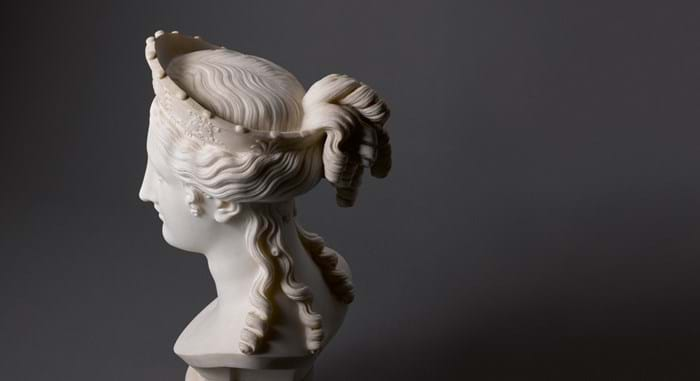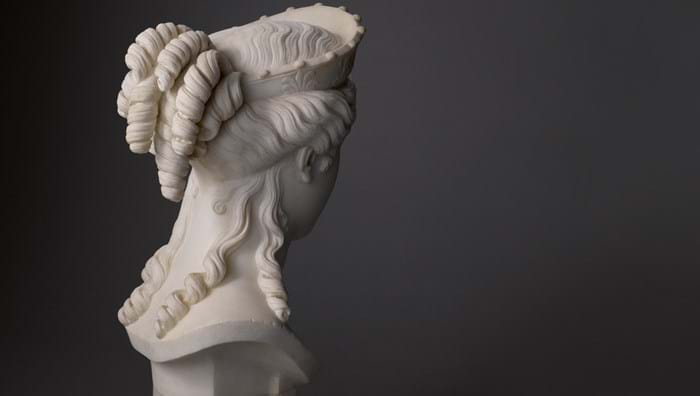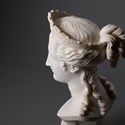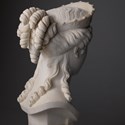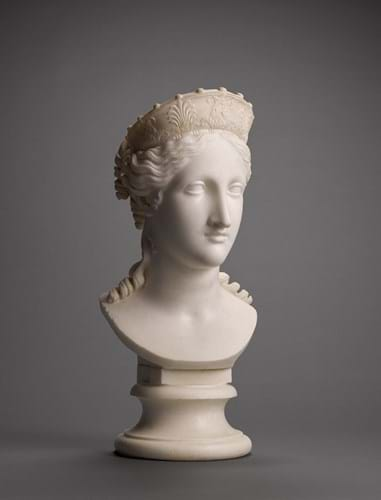
Bust of Peace is a known work, having first been exhibited by the great Italian master in 1817 at the Royal Academy summer exhibition, but its whereabouts have become lost over the years.
Now, over 200 years since it was last seen in public, the white marble bust will be offered at Sotheby’s on July 4 with an estimate in excess of £1m.
It was acquired by Sotheby’s vendor on the UK market within the last 10 years. Bought as an unattributed work, the current owner has conducted extensive research into the work and identified the 21in (53cm) high sculpture as from Canova’s celebrated series of Teste Ideale (Ideal Heads).
These busts, each representing a different conception of beauty, were created by the sculptor late in life expressly as gifts to his closest friends and patrons.
Bust of Peace was carved for his first British patron John Campbell, Lord Cawdor, in part to thank him for his help in repatriating art looted from Italy by the French armies during the Napoleonic Wars.

Another view of ‘Bust of Peace’, a white marble head by Antonio Canova that is offered at Sotheby’s.
Following John Campbell’s death in 1821, it passed down through five generations of the Cawdor family but, by the time the contents of the family house, Stackpole Court in Pembrokeshire, were sold at auction in 1962, the sculpture’s importance had become forgotten and it was described simply in the catalogue as ‘a white marble bust of a lady wearing a diadem’.
Sotheby's clearly have no doubt that the current sculpture is Canova’s Bust of Peace. It described the sculpture as a “a significant rediscovery, of seminal importance within Canova’s oeuvre”.
Research and approval
Sotheby’s director of European sculpture & works of art Christopher Mason said the rediscovery represented “the culmination of years spent piecing together fragments of information that together now tell the complete story of what is a truly exceptional, long-lost work”.
When asked to outline the main areas for the research which confirmed the attribution to Canova, Sotheby’s pointed to the bust corresponding exactly to the plaster with pointing markers in the Museo di Bassano del Grappa – recently rediscovered itself by Professor Mario Guderzo, director of the Museo Canova and Gipsoteca Canoviana, Possagno. This is consistent with Canova’s technique of executing marble sculptures from plaster models.
The attribution was confirmed by Hugh Honour, a leading Canova expert who identified the bust as Peace from the Ideal Heads series before he died in 2016, with further approval coming from both Professor Guderzo and Dr John Davies (author of the forthcoming book Changing Fortunes: The Cawdors, a British aristocratic family, 1689-1976 being published in 2019).
Mason added that this piece was “a technical tour de force, displaying Canova's absolute mastery in marble, particularly with the beautiful carving of the hair and the purity of the expression”.
“Autograph works by Canova are fantastically rare on the market and so to be offering this bust, newly-rediscovered and with such a special story behind it, is something remarkable indeed.”
Another Teste Ideale representing Calliope, the Muse of Epic Poetry sold at Sotheby’s in 1995. It was subsequently blocked from export and was eventually acquired by the Ashmoleon Museum in Oxford for £746,000. That example had a similar background to the current work, being carved for William Richard Hamilton, the British Under-Secretary of State for Foreign Affairs.
The last Canova bust to appear on the market, the bust of Joachim Murat, King of Naples, sold at Christie’s in November 2017 for €4.32m (including premium).


